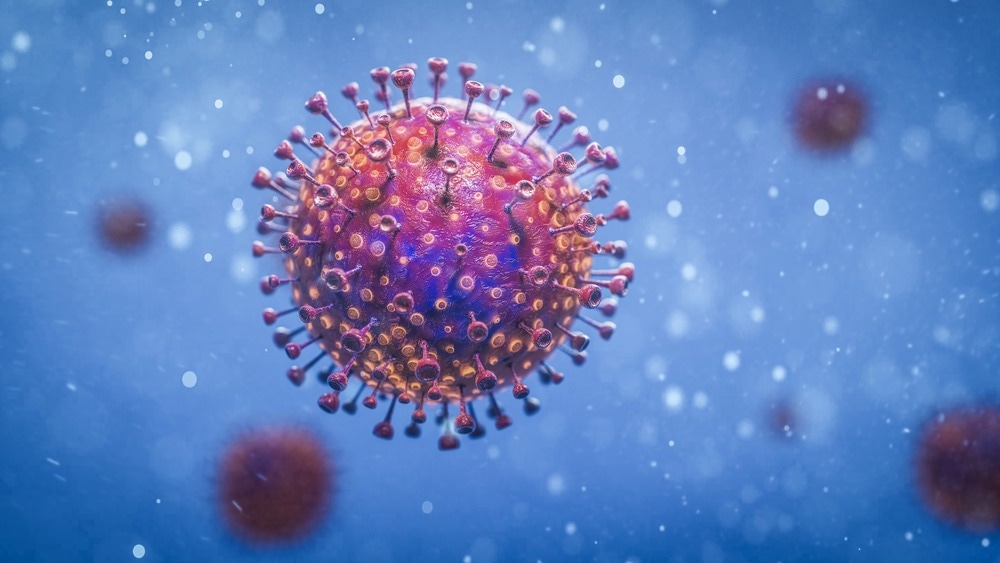In a recent study posted to the medRxiv* preprint server, researchers from Sweden conducted a cohort study to evaluate the protection granted by previous severe acute respiratory syndrome coronavirus 2 (SARS-CoV-2) Omicron subvariant infections against reinfections among individuals vaccinated between June and August 2022.
 Study: Protection against infection with the Omicron BA.5 subvariant among people with previous SARS-CoV-2 infection - surveillance results from southern Sweden, June to August 2022. Image Credit: Mahir KART/Shutterstock
Study: Protection against infection with the Omicron BA.5 subvariant among people with previous SARS-CoV-2 infection - surveillance results from southern Sweden, June to August 2022. Image Credit: Mahir KART/Shutterstock

 *Important notice: medRxiv publishes preliminary scientific reports that are not peer-reviewed and, therefore, should not be regarded as conclusive, guide clinical practice/health-related behavior, or treated as established information.
*Important notice: medRxiv publishes preliminary scientific reports that are not peer-reviewed and, therefore, should not be regarded as conclusive, guide clinical practice/health-related behavior, or treated as established information.
Background
With large portions of the global population vaccinated with the primary two doses of one of the many available vaccines, the severity of coronavirus disease 2019 (COVID-19) and associated mortality has decreased significantly. However, the SARS-CoV-2 Omicron subvariants carrying mutations that increase their transmissibility and immune evasion abilities have replaced earlier variants in circulation. The Omicron BA.5 subvariant has replaced the BA.1 and BA.2 subvariants in many countries.
Furthermore, studies from various countries report that hybrid immunity from vaccinations and previous SARS-CoV-2 infections protect against infections from the BA.5 subvariant. A Portuguese study reported that previous BA.1 and BA.2 infections granted 75% protection against BA.5 infections. In comparison, a study from Denmark reported over 90% protection from BA.1 and BA.2 infections among vaccinated individuals against BA.5 infections, albeit with no assessment of waning immunity.
About the study
In the present study, the researchers included individuals between the ages of 18 and 64, residing in Scania county in southern Sweden, who had received their first vaccination dose on or before 24 April 2021. Since healthcare workers were prioritized for the early vaccination program, the authors expected the study cohort to comprise mainly healthcare workers. The longitudinal study followed up with the participants until 9 August 2022 for positive SARS-CoV-2 tests.
The follow-up period was divided into seven groups based on the sequencing results from infected case samples. The follow up-period divisions included the time before the emergence of the Omicron variant, the transition phase for Omicron dominance, the dominance period of the BA.1 sub-variant, the transition phase for Omicron BA.2, the dominance period of BA.2, transition to BA.5, and period of BA.5 dominance.
Vaccination status data from the National Vaccination Register, positive SARS-CoV-2 test results from regional health registers, and data on comorbidities and COVID-19 outcomes were statistically analyzed. Assessed comorbidities included cardiovascular diseases, diabetes, kidney and liver diseases, obesity, cancer and related immunosuppressed conditions, neurological diseases, other respiratory diseases, Down syndrome, sickle cell anemia, human immunodeficiency virus infections, thalassemia, and other conditions such as drug addiction and mental health disorders.
Additionally, a 1:10 sex and age-matched control group with no positive SARS-CoV-2 tests during the same weeks as the infected cases was also included in the analysis. The protection against Omicron BA.5 infection was estimated using conditional logistic regression according to the time of the most recent SARS-CoV-2 infection, adjusted for the vaccine doses.
Results
The results reported that previous SARS-CoV-2 infections with variants before Omicron provided reduced protection (11%) against reinfections. In comparison, previous Omicron subvariant infections provided significantly greater protection (66%) against reinfections with Omicron BA.5. The hospitalization risk during BA.5 dominance was relatively low (1.6%), although higher than that during the dominance of the BA.1 subvariant (0.5%).
Previous infections with the Omicron BA.2 sub-variant granted stronger protection (77%) against reinfections with BA.5 than previous BA.1 infections (30%). Furthermore, prior infection with Omicron BA.2 provided 85% and 66% protection against reinfections during early and late BA.5 dominance periods, respectively.
The study analyzed 1,114 COVID-19 reinfection cases, matched with 11,140 controls. The test and control groups were similar in demographic, socioeconomic factors, and comorbidities. Surprisingly, booster vaccinations were seen to have no significant effect on protection against reinfections, with a larger number of individuals with booster vaccinations present in the test group than in the control group.
Conclusions
Overall, the results indicated that compared to previous infections from SARS-CoV-2 variants before Omicron, prior Omicron subvariant infections, especially BA.2 infections, granted significantly higher protection against reinfections during the dominance period of the Omicron BA.5 subvariant.
Additionally, booster vaccine doses did not result in a significant change in protection against reinfections, indicating that natural Omicron sub-variant infections granted better short-term protection against reinfections during the Omicron BA.5 dominance period than booster vaccines did. However, the protection provided by previous Omicron infections was seen to wane five to six months after the infection.

 *Important notice: medRxiv publishes preliminary scientific reports that are not peer-reviewed and, therefore, should not be regarded as conclusive, guide clinical practice/health-related behavior, or treated as established information.
*Important notice: medRxiv publishes preliminary scientific reports that are not peer-reviewed and, therefore, should not be regarded as conclusive, guide clinical practice/health-related behavior, or treated as established information.